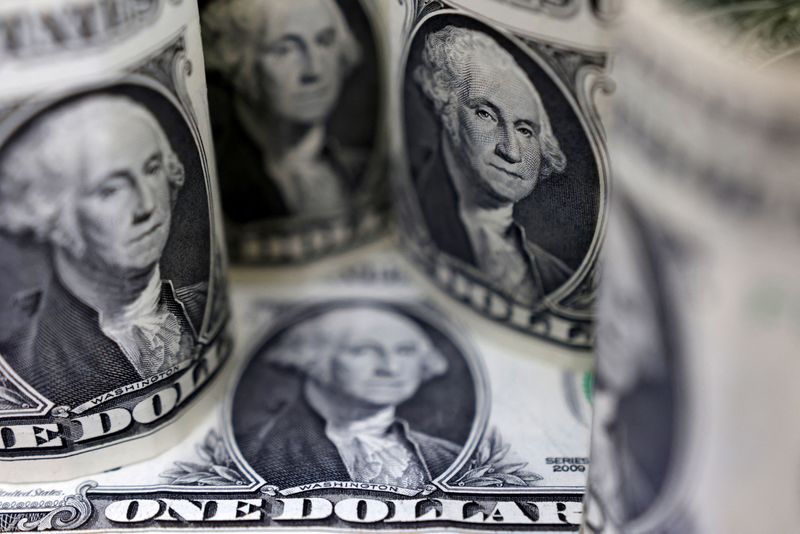Forex
Dollar set for strong quarterly gains as Powell stays hawkish


© Reuters
Investing.com – The U.S. dollar stabilized in early European trade Friday, but is on course to record strong quarterly gains as traders anticipate the U.S. Federal Reserve raising interest rates further as the year progresses.
At 02:00 ET (06:00 GMT), the , which tracks the greenback against a basket of six other currencies, traded marginally lower at 102.980, but is heading for a gain of about 0.7% in the second quarter.
Powell points to further hikes
Fed Chair Jerome Powell has been pretty clear over the last few weeks, including at the European Central Bank’s annual gathering in Portugal earlier this week, that the U.S. central bank is likely to resume its rate-hiking cycle after pausing in June.
Data released on Thursday showed that the grew much more than initially thought in the first quarter, while the data indicated a still strong labor market.
“Central bank communication at this week’s Sintra conference in Portugal has stayed pretty hawkish. The core message seems to be that low unemployment rates have allowed economies to withstand large tightening cycles reasonably well, meaning that inflation has not fallen as much as expected,” said analysts at ING, in a note.
“Expectations for the duration and terminal rates for tightening cycles are being revised higher. This is most credibly being done in the U.S., where the economy appears to be outperforming.”
The focus now falls later Friday on the release of the , the Fed’s favorite gauge of inflation, which is expected to have remained steady in May from the prior month, pressuring the Fed into keeping rates high to curb sticky inflation.
Eurozone June CPI due
Back in Europe, rose 0.1% to 1.0874, ahead of the release of the June for the eurozone as a whole.
This is expected to fall to 5.6% in June from 6.1% in May, but rose by much more than expected in June, and this creates the possibility of an upside surprise given the dominance of the German economy.
European Central Bank President has largely cemented expectations earlier this week for a ninth consecutive rise in interest rates in July, and this hawkish tone is set to prompt gains of roughly 1.7% for the euro against the dollar this month.
U.K. GDP edges higher
rose 0.2% to 1.2633, with sterling on course for a 1.4% monthly gain despite first quarter growing just 0.1% on the quarter.
However, despite this weak growth, traders continue to price in more rate hikes from the as the country’s rate remained at 8.7% in May, the highest of any major advanced economy.
Yen heads for hefty quarterly loss
fell 0.1% to 144.64, retreating after reaching a high of 145.07 in early Asia trade, its lowest in over seven months, but still heading for a quarterly loss of more than 8%.
Data on Friday showed rose 3.2% in June from a year earlier, once more above the Bank of Japan’s 2% target, but new Governor Kazuo Ueda has stated that the central bank will maintain its accommodative monetary policy for some time yet.
Elsewhere, the risk-sensitive rose 0.2% to 0.6629 amid speculation that the will hike rates next week to curb sticky inflation, while edged lower to 7.2521 after softer-than-expected Chinese data.

 Forex3 years ago
Forex3 years agoForex Today: the dollar is gaining strength amid gloomy sentiment at the start of the Fed’s week

 Forex3 years ago
Forex3 years agoUnbiased review of Pocket Option broker

 Forex3 years ago
Forex3 years agoDollar to pound sterling exchange rate today: Pound plummeted to its lowest since 1985

 Forex3 years ago
Forex3 years agoHow is the Australian dollar doing today?

 Cryptocurrency3 years ago
Cryptocurrency3 years agoWhat happened in the crypto market – current events today

 World3 years ago
World3 years agoWhy are modern video games an art form?

 Commodities3 years ago
Commodities3 years agoCopper continues to fall in price on expectations of lower demand in China

 Economy3 years ago
Economy3 years agoCrude oil tankers double in price due to EU anti-Russian sanctions





















